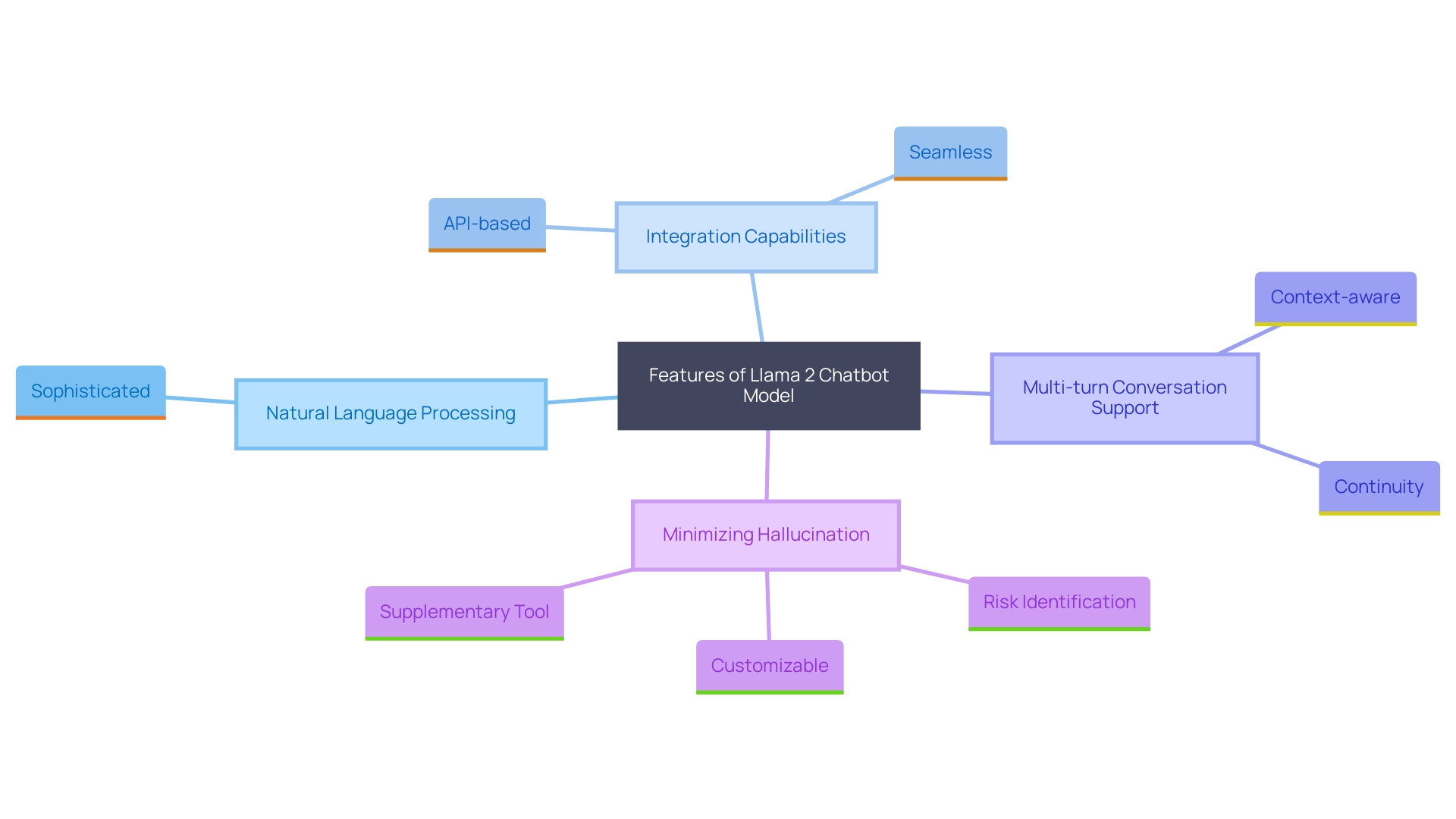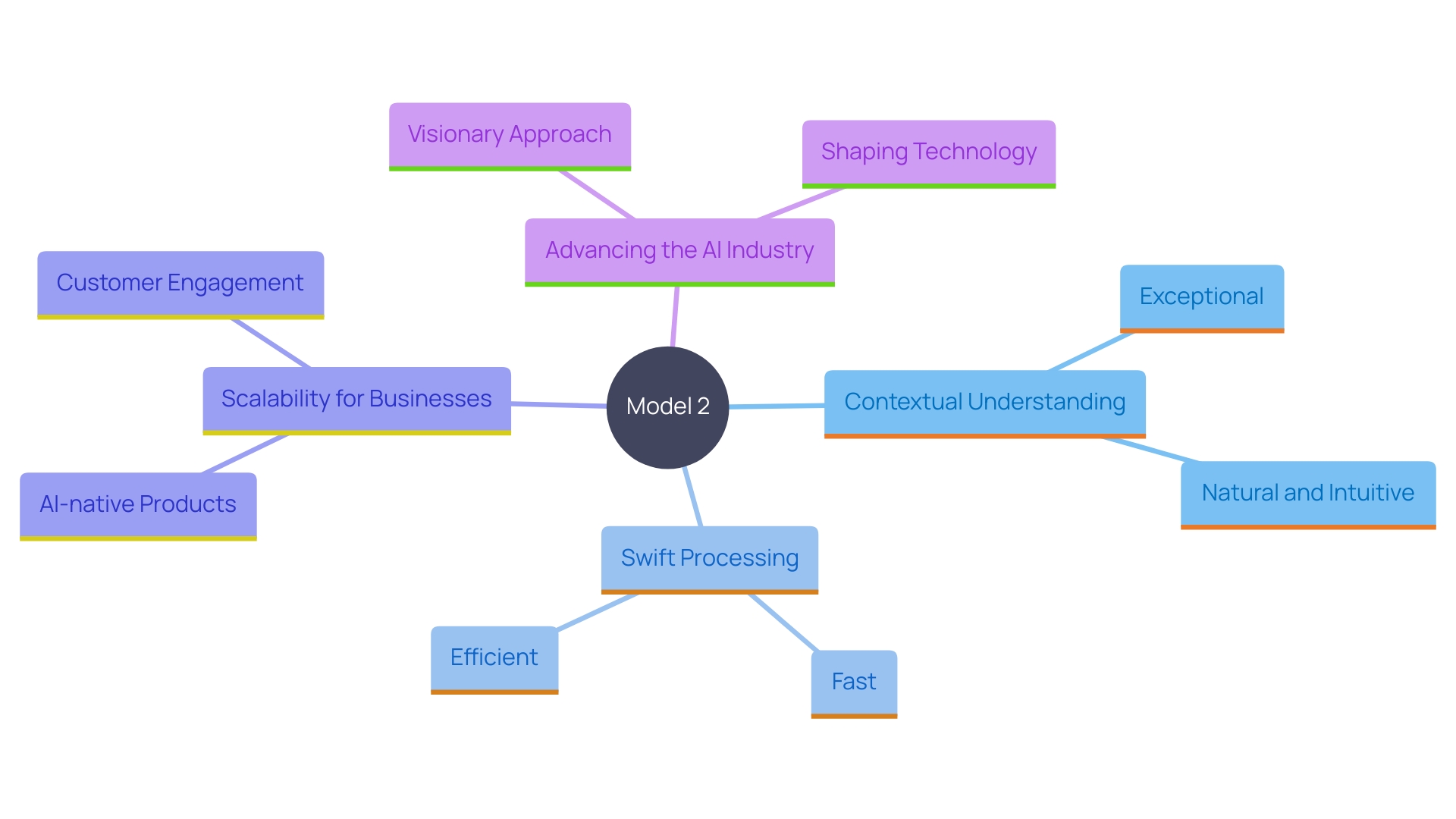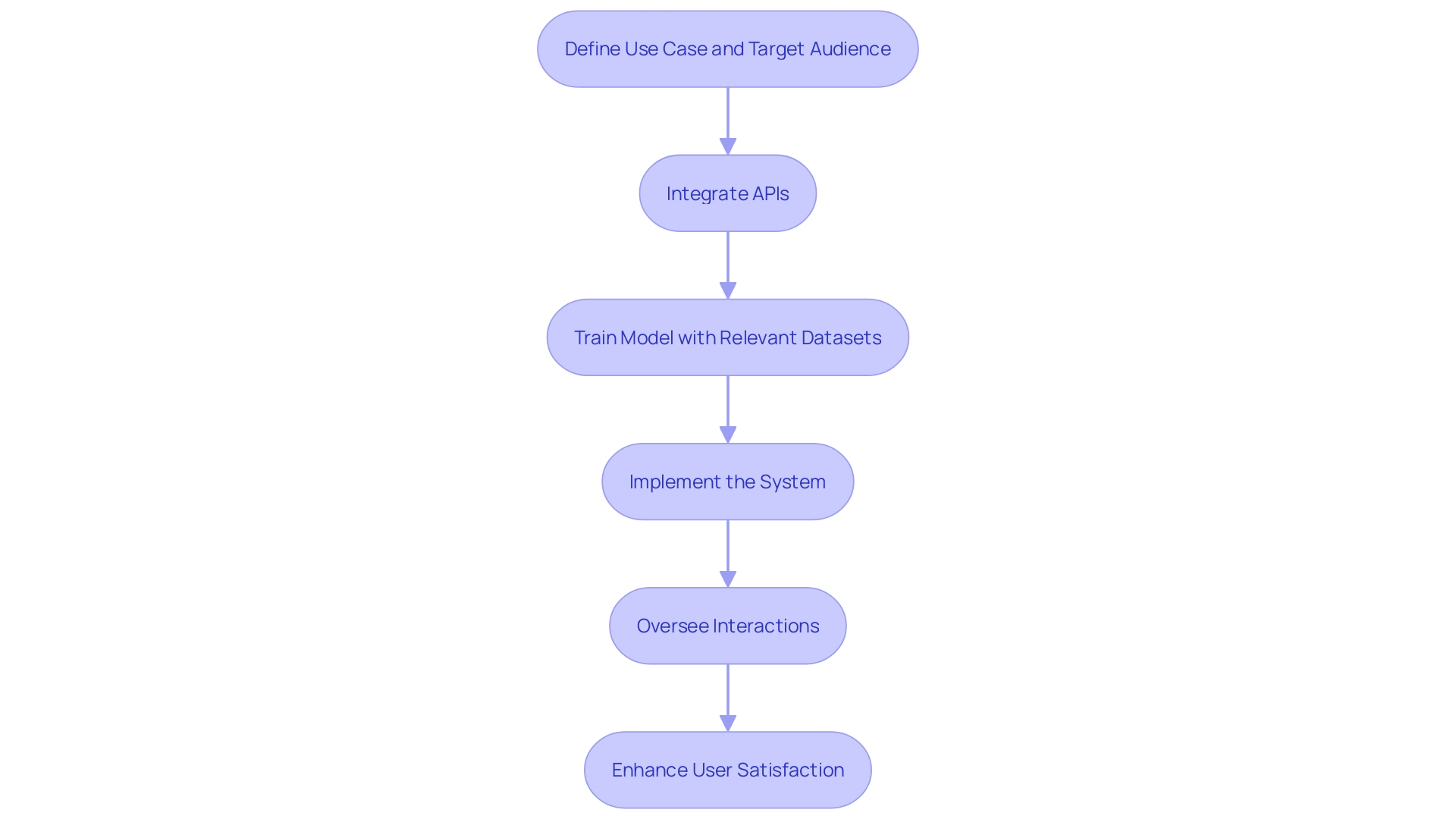Introduction
In the rapidly evolving landscape of artificial intelligence, Llama 2 emerges as a groundbreaking innovation, poised to revolutionize user interaction with its advanced natural language processing capabilities. This article explores the key features of Llama 2, delving into its sophisticated architecture and the advantages it holds over other models. It also provides a practical guide for building a Llama 2 chatbot, ensuring its effective deployment and user satisfaction.
Finally, the article looks ahead to the future implications of Llama 2, particularly its integration with cutting-edge technologies like augmented reality and the Internet of Things, offering a glimpse into the transformative potential of AI-driven solutions for businesses.
Key Features of Llama 2
This model distinguishes itself in the chatbot domain with its sophisticated natural language processing capabilities, enabling it to comprehend and generate human-like text. ‘This large language system (LLS) is engineered to seamlessly integrate with diverse platforms, enhancing its adaptability across various environments.’. ‘The strong design of version 2 enables it to manage complex inquiries, providing accurate answers that enhance interactions for individuals.’.
The system’s support for multi-turn conversations ensures continuity and context, which are critical for engaging user experiences. This capacity for managing extensive dialogues stems from its underlying framework, which includes document indexing and querying through LLamAIndex. This framework ensures real-time query processing across vast databases, making information retrieval swift and accurate.
Furthermore, Llama 2 minimizes the issue of ‘hallucination’—where systems generate plausible but incorrect responses—by employing advanced techniques like Retrieval Augmented Generation. This approach enhances the reliability of the responses, making it suitable even for scenarios where accuracy is paramount, such as financial analysis.
‘As OpenAI Chief Executive Officer Sam Altman noted, this marks ‘the beginning of a new paradigm’ in AI, where these tools act as sophisticated co-pilots, assisting individuals with both personal and professional tasks.’. The ongoing advancements in AI underscore the potential of models like Llama 2 to transform interactions through smarter, more dependable conversations.

Advantages of Llama 2 Over Other Models
‘Model 2 stands out for its exceptional contextual understanding, enabling it to comprehend inquiries with remarkable nuance.’. This capability leads to more precise and pertinent responses, significantly improving satisfaction among individuals. Additionally, Model 2 is crafted for swift processing, guaranteeing individuals obtain prompt responses, an essential aspect for sustaining engagement. The model’s scalability is another significant benefit, enabling businesses to easily enhance their automated communication features in response to increasing demands from individuals. ‘The excitement surrounding the second iteration can be attributed to its role in pushing the boundaries of the AI industry, evolving from a social media platform into an AI powerhouse.’. This evolution has brought advancements in natural language processing and other cutting-edge technologies, with each launch showcasing its prowess. Many of these innovations have been generously open-sourced, promoting a collaborative and inclusive approach to innovation, and sparking speculation that they might surpass benchmarks set by AI giants like OpenAI.

Building a Llama 2 Chatbot: A Practical Guide
Developing a conversational agent based on Llama 2 includes several essential steps to guarantee its efficiency and consumer contentment. The first step is to define the specific use case and target audience, tailoring the chatbot’s functionalities to meet user needs. This is akin to the initial assessment process in digital technology adoption, ensuring appropriateness and compliance. Next, developers can leverage available APIs to seamlessly integrate Llama 2 into existing systems, similar to how blockchain technology ensures data integrity and confidentiality.
Training the model with relevant datasets is essential to enhance its performance. This iterative process mirrors the continuous refinement seen in AI-driven projects to ensure accuracy and relevance. According to a study on artificial intelligence conversational agents, by 2027, these tools are predicted to become the primary channel for customer service in a quarter of all businesses, highlighting the significance of precise training and deployment.
Implementing the automated conversation system and consistently overseeing its interactions are essential. This step guarantees that the virtual assistant develops and fulfills the requirements of individuals efficiently, similar to how organizations monitor and assess the return on investment for AI integrations. Utilizing insights from real-world interactions aids in refining the chatbot’s responses and enhancing satisfaction, making it a valuable asset for any organization.

Future Implications and Integration with Other Technologies
‘The future of the second iteration of the llama model and similar chatbots is poised to be transformative, particularly with their integration into emerging technologies like augmented reality (AR) and the Internet of Things (IoT).’}. This merger has the potential to create immersive experiences for individuals, significantly enhancing interactivity and responsiveness across various environments. For instance, Lufthansa’s adoption of AR to simulate its Allegris cabin experience for training and promotional purposes underscores the practical applications of such technologies. This approach not only reduces costs associated with physical exhibits and training but also broadens reach and accessibility. As AI continues to evolve, the second version’s capabilities will expand, allowing for more sophisticated interactions and a deeper understanding of user intent. This will fundamentally alter how businesses engage with customers, moving from traditional methods to more advanced, AI-driven solutions. The shift in how we interact with technology, from a search-based model to an advisory role, exemplifies the potential of AI to reshape our digital experiences. With 34% of businesses already adopting generative AI in marketing and sales, the trajectory for Llama 2 includes driving innovation and boosting customer engagement in ways previously unimaginable. OpenAI’s CEO Sam Altman remarked on this paradigm shift, highlighting Ai’s role in acting as sophisticated ‘co-pilots’ for both personal and professional tasks. As businesses harness these advancements, they stand to gain a competitive edge in an increasingly AI-driven world.
Conclusion
Llama 2 represents a significant leap in artificial intelligence, particularly in the realm of natural language processing. Its advanced architecture allows for nuanced understanding and generation of human-like text, setting a new standard for user interaction. With the ability to manage multi-turn conversations and retrieve information efficiently, Llama 2 enhances user engagement and satisfaction, making it a powerful tool across various applications.
The advantages of Llama 2 over other models are evident in its contextual understanding and rapid processing capabilities. Businesses can scale their chatbot functionalities effortlessly, adapting to the evolving demands of users. This adaptability, combined with the open-source innovations surrounding Llama 2, positions it as a frontrunner in the AI landscape, pushing the boundaries of what chatbots can achieve.
Building a Llama 2 chatbot requires a strategic approach, from defining use cases to continuous monitoring and refinement. This process ensures that the chatbot remains effective and aligned with user needs, ultimately driving customer satisfaction. As the adoption of chatbots grows, the importance of precise training and deployment cannot be overstated.
Looking ahead, the integration of Llama 2 with emerging technologies like augmented reality and the Internet of Things promises to redefine user experiences. The potential for creating immersive interactions will not only enhance customer engagement but also foster innovation in business practices. As organizations embrace these advancements, they will find themselves well-equipped to navigate an increasingly AI-driven future, gaining a competitive edge in their respective industries.

